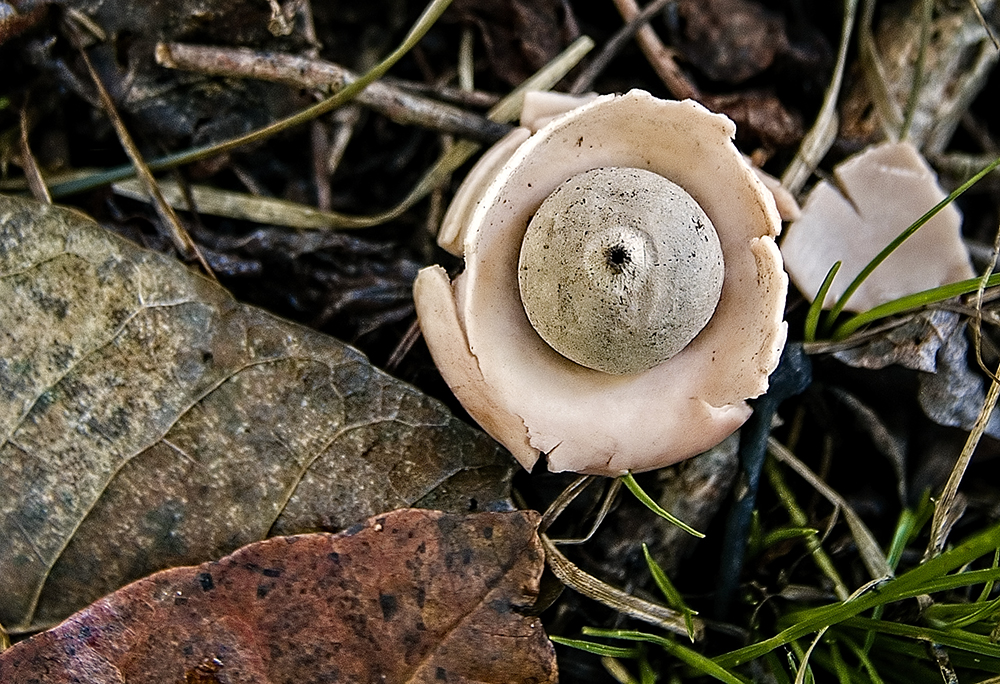
Olympus C5050Z – 12mm – ISO 100 - 1/25 sec - f/2
Earthstar
The earthstar is sometimes called the “barometer earthstar,” because the pointed rays of the star react to the amount of water in the air. When it’s very dry, the ray-shaped arms fold around the center puffball to protect it from predators and the elements. However as the rains begin, the different parts of the hygroscopic rays absorb water at different rates, causing them to unfold to expose the center puffball. Additional raindrops fall on the puffball part and the spores are puffed out, much like what happens in Lycoperdon pyriforme, the pear shaped wolf-fart puffball (wouldn’t want to smell this puffball). However there’s more! In addition to merely exposing the puffball part, the rays curl and extend far enough to slightly raise the puffball part a couple of centimeters into the air, thus increasing the chances that the spores will get caught in the stream of air and be scattered to a far-off location. This small distance doesn’t seem like much, but studies have shown a significantly stronger air stream just a few cm away from any rough surface. Thus the rays of the Astraeus fruiting body are not only beautiful, but also perform a function important for the survival of the species in a couple of different ways.